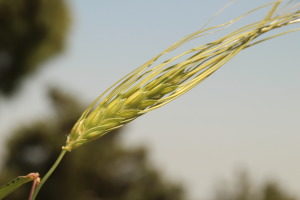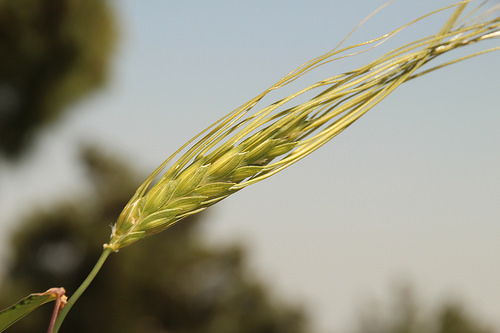
A sophisticated sequencing study reveals genetic changes that emerged in wheat as it became domesticated by agricultural societies in the Fertile Crescent, roughly 10,000 years ago. The findings provide scientists with a better understanding of traits in modern wheat – the variety used to make bread and pasta – and could inform efforts to improve the yield and quality of this key food source. The domestication of wild wheat caused a shift in traits, which mostly relate to seed dormancy, spike morphology, and grain development. For example, while the spikes of wild wheat shatter at maturity, all domesticated wheat spikes remain intact, which enables easier harvest. Here, Raz Avni and colleagues used 3-D genetic sequencing data and software to reconstruct the 14 chromosomes of wild tetraploid wheat, Triticum turgidum. The team then compared genes responsible for shattering in domesticated wheat to the corresponding genes in wild wheat, in order to understand genetic changes underlying the evolutionary transition to a non-shattering state. They identified two clusters of genes in domesticated wheat that have lost their function. When they engineered strains of wheat with one of these gene clusters restored, the wheat exhibited unique spikes where the upper part was brittle and the lower part was not brittle. These results suggest that the two gene clusters play a part in the transforming the brittle qualities of wild wheat.
______________________________________________
Wild emmer wheat growing in Israel. Cedit: Zvi Peleg
______________________________________________
This research appears in the 7 July 2017 issue of Science.
Science is published by AAAS, the nonprofit science society.
Article Source: News release of the AAAS
______________________________________________
Receive 30 days free access to the popular new CuriosityStream lineup of documentaries on science, history, nature, and technology as a new Popular Archaeology premium subscriber.
___________________________________________
Travel and learn with Far Horizons.
____________________________________________
This richly illustrated issue includes the following stories: Recent findings shedding new light on the whereabouts of the remains of Philip of Macedon, father of Alexander the Great; how an archaeologist-sculptor is bringing bones of the dead back to life; archaeologists uncovering town life at the dawn of civilization; an exclusive interview with internationally acclaimed archaeologist James M. Adovasio about what makes the Meadowcroft Rockshelter prominent in the ongoing search for the first Americans; what archaeologists are finding at the site of the ancient city of Gath, the home town of the biblical Philistine giant, Goliath; and how scientists are redrawing the picture of human evolution in Europe. Find it on Amazon.com.








